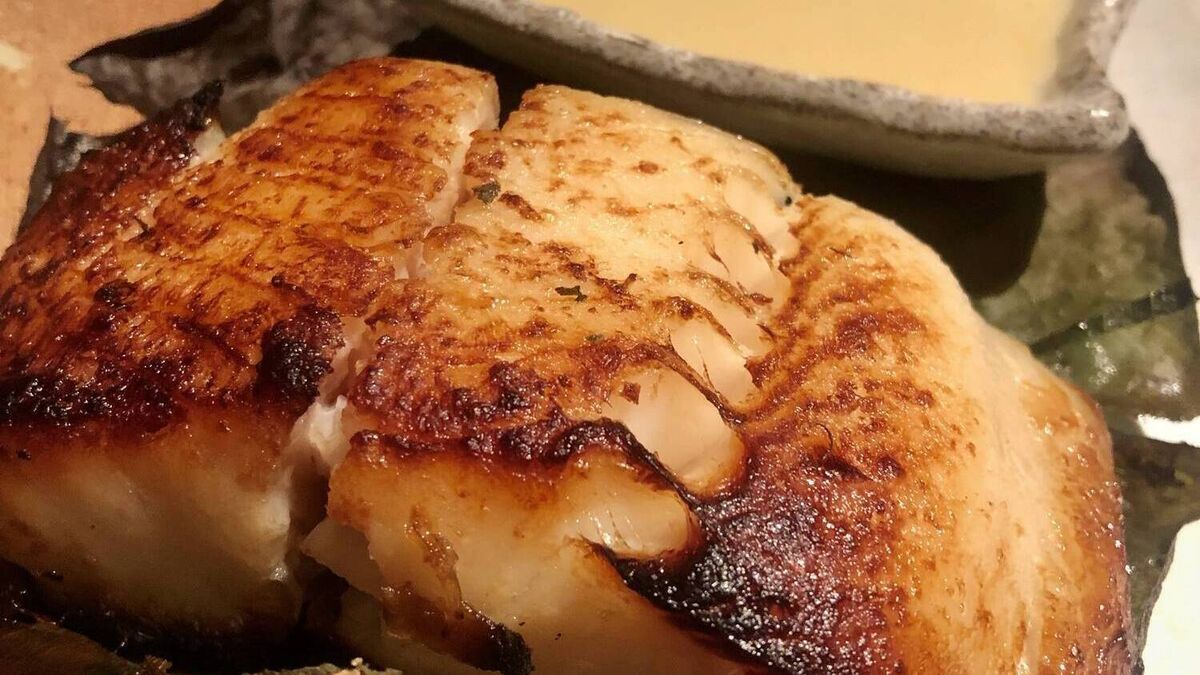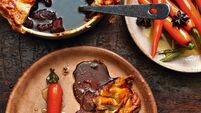Darina Allen: What is miso, how to use it and a recipe for foolproof miso soup

packed with ‘good for your gut’ probiotics
This week, in answer to readers’ enquiries about how to use some 'new' ingredients, I've chosen to concentrate on miso for this article out of a list of more than 10, n'djuja, miso, sumac — I’ll get to the others in due course…
Some of you who enjoy cooking Asian and Japanese food particularly will have been enjoying miso in both raw and cooked dishes for years and others will have noticed it popping up in random recipes in cookbooks and articles with increasing frequency.
The word simply means fermented beans in Japanese. It's nearly always made with soya beans, sometimes with other grains, beans and koji (a totally safe type of mould that grows on rice). It's a staple of Japanese food. It lends a deeply savoury umami flavour to many vegetarian dishes but also makes meat and fish taste more intensely delicious. It's packed with ‘good for your gut’ probiotics.
Miso has been made in Japan for millennia. The traditional process, considered to be an art form in Japan, involves inoculating a grain, usually rice, with the mould called koji; and then using that to ferment a protein-rich legume, usually soy. However, now that miso is no longer niche but quickly becoming mainstream, artisans, particularly in the US are experimenting with other grains: chickpeas, lima, aduki beans, farro, even sweet potatoes.
As the demand for this 'must have' sweet, salty flavour enhancer grows so does the demand for a non-soy version for those with allergies. So there can be lots of varieties, more than 1,000 in Japan but for most of us here, there are just two choices. White (light) or red miso (dark). It varies in colour, texture and flavour and can be fermented for anywhere from a few weeks to several years.
Paler miso tends to be sweeter; dark miso has a more earthy, robust taste. The salty funkiness ramps up the flavour of a myriad of dishes. It can be eaten raw or cooked, used to add a burst of flavour to anything from gravy, polenta, stews, marinades, sauces, salad dressings, butters — even bikkies or apple pie — so much more than miso soup which is many people’s introduction to miso.
It's also super nutritious, brilliant for your gut biome and a terrific source of antioxidants, dietary fibre and protein. It’s now become a global flavour enhancer that no pantry should be without. You'll find it in your nearest Asian/Japanese store and in many supermarkets in a tub or jar — it looks like a paste resembling peanut butter. If you are fortunate to have a Japanese store near you, you'll have a wider choice. Even the pale miso lasts for ages, and darker miso, fermented for longer, lasts for years in an airtight container in your fridge.
Chefs inspired by the NOMA Food Laboratory are experimenting with making their own.
So stock up and start to experiment. Pale miso is sweeter, less complex, more versatile, use it in soups, dressings, sauces, marinades. It also dissolves more easily and is dairy-free and vegan.
Pan-grilled fish with miso
You can’t imagine how this miso ‘marinade’ enhances the flavour of the fish

Servings
4Preparation Time
20 minsCooking Time
5 minsTotal Time
25 minsCourse
MainIngredients
4 fillets of spanking-fresh fish
2 tbsp white miso
½ tbsp runny honey
1 tsp Asian sesame oil
1 tsp soy sauce
Accompaniment:
salad of organic leaves
Method
Whisk all the marinade ingredients together. Coat the flesh side of the fillet, allow 15-20 minutes for the fish to absorb the flavour.
Heat a grill-pan over a medium heat. Wipe excess marinade from the fish. Drizzle with olive oil, cook, skin side down for 2 minutes approximately, then flip over to cook the flesh side. Continue to cook for a further 2-3 minutes depending on the thickness of the fish. Serve immediately with a little salad of organic leaves.
Aki Ishibashi’s Miso Soup
This is so easy to make and super nutritious and delicious

Servings
4Preparation Time
30 minsCooking Time
5 minsTotal Time
35 minsCourse
StarterIngredients
For the dashi (optional, there are instant dashis available)
425ml (15fl oz) water
10cm (4 inch) piece konbu (dried kelp)
5-7g (1/8 – 1/4oz) dried bonito flakes
3-4 generous tbsp miso paste
175g (6oz) tofu, cut into 1cm (1/2 inch) cubes
1 dessertspoon wakame (dried seaweed)
Method
Wipe and clean konbu with a dry cloth. Do not wipe off the white powder on the surface, as that element provides a unique savoury flavour. Put the water in a saucepan and soak the konbu for 30 minutes before turning on the heat. Remove any 'scum' that forms on the surface. When the water begins to bubble, just before boiling, take out the konbu. Do not overcook or it will become slimy and the flavour of the stock too strong. Add the bonito flakes, bring back to the boil, turn off the heat and set aside until the bonito flakes sink to the bottom. Strain through very fine muslin and discard the bonito flakes. Use fresh garnished with spring onion or freeze immediately.
Heat the dashi, and dissolve the miso paste by stirring it into the dashi. When it has dissolved completely, add the tofu cubes and wakame. Bring it to the boil. As soon as it starts to boil, turn off the heat. Ladle miso soup into warmed individual soup bowls and garnish with spring onion.
Get all your family or housemates involved and join Rachel Allen for what will be a really fun evening, cooking a delicious 3-course supper to enjoy around the kitchen table afterwards with family and friends.
We’ll send you a recipe booklet and shopping list so you can source all your ingredients and equipment and be prepared in plenty of time.
021 4646 785 or see cookingisfun.ie
At the Ballymaloe Cookery School Farm Shop, we’ve just got a delivery of Sacha Whelan’s chopping boards. Handmade from legally-sourced iroko timber and beautifully finished and oiled — an exquisite gift for any cook. Use both sides. Mark C for cooked and F for fruit on one side and O for onion and R for raw on the other and use accordingly.
telephone 021 4646 785
Discover the next great grain…in Abra Berens new book Grist. I reckon I am pretty knowledgeable about grains, legumes ad seeds but I’d certainly never heard of fonio and kernz. Grains and legumes are the major source of sustenance in many nations and cultures. Grist includes more than 80 recipes and more than 160 variations: beautiful photos and helpful illustrations as well as stories about the staples and the farmers who grow them featured in this groundbreaking book. Grist is published by Chronicle Books.
Abra is a Ballymaloe Cookery School alumni — ‘by your pupils, you’ll be taught’.





